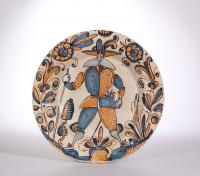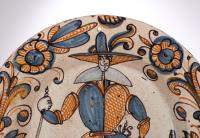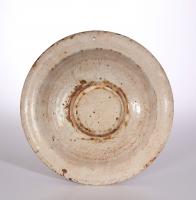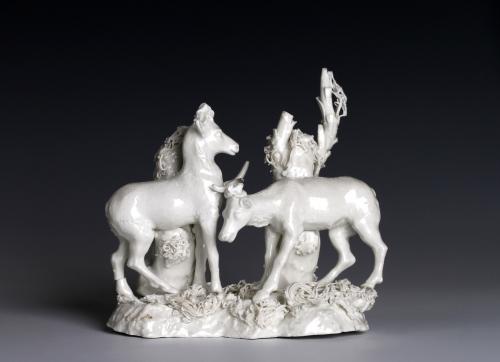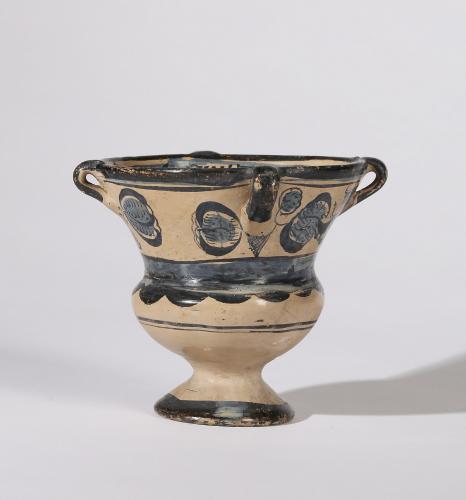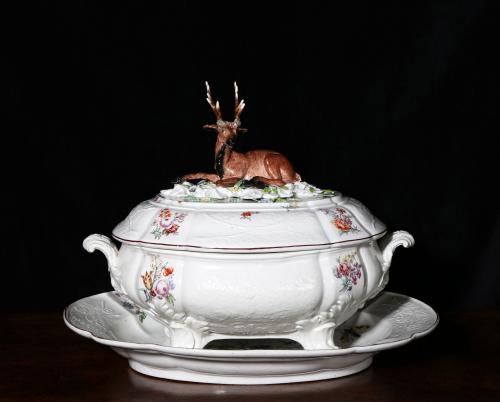
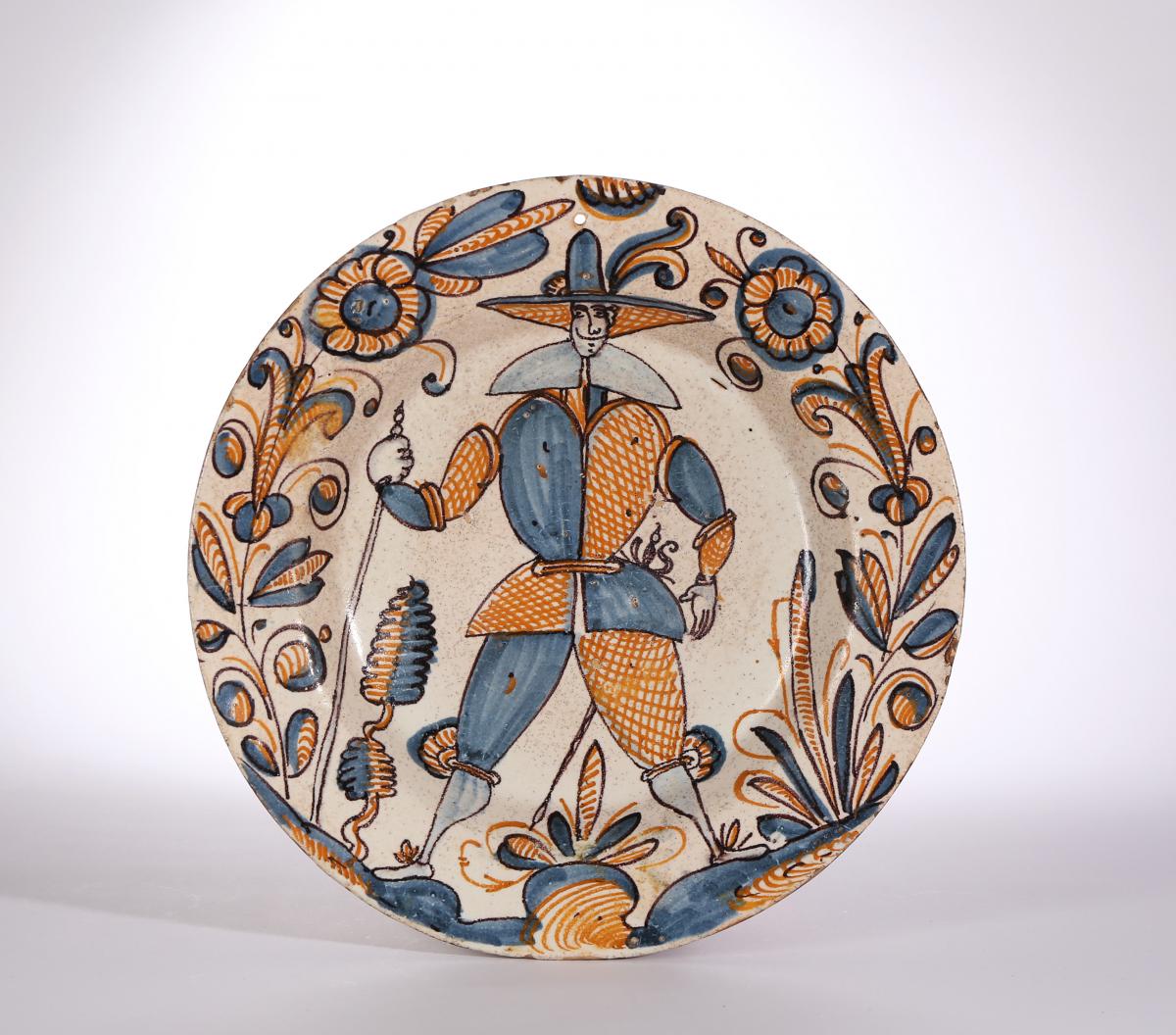
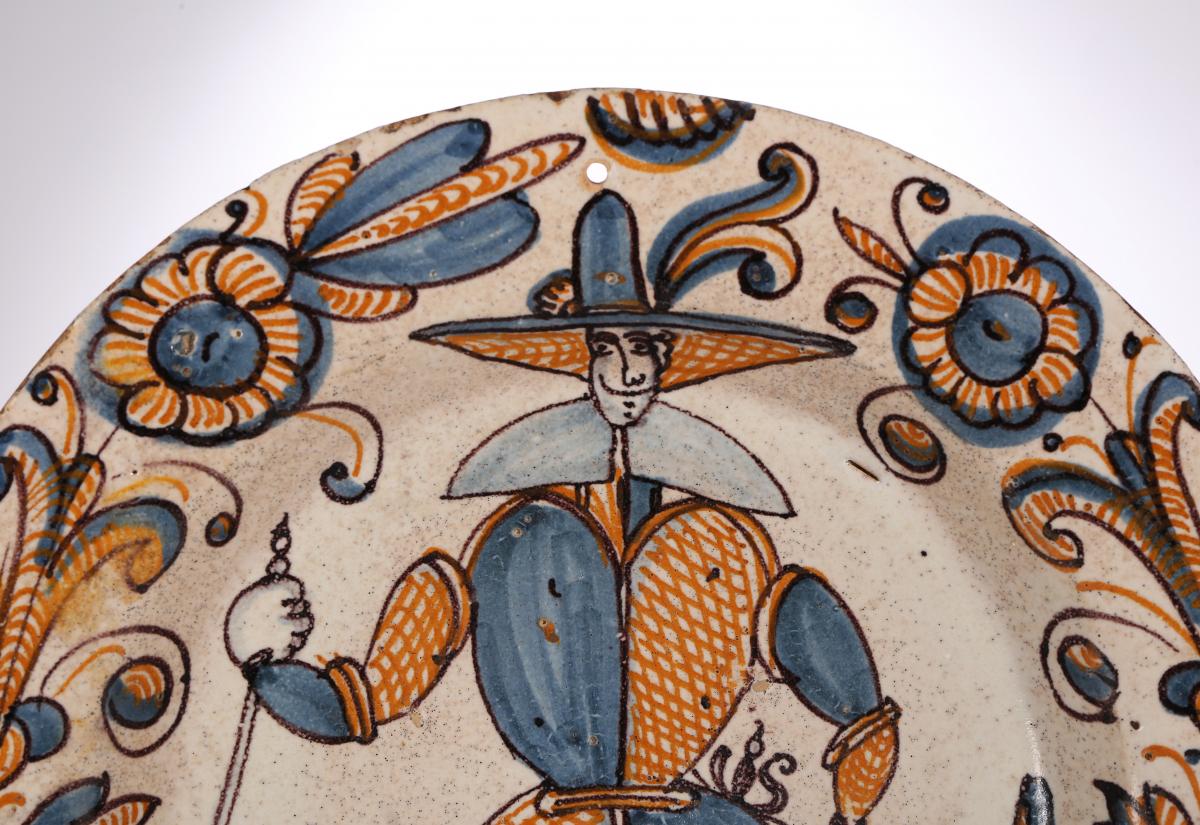
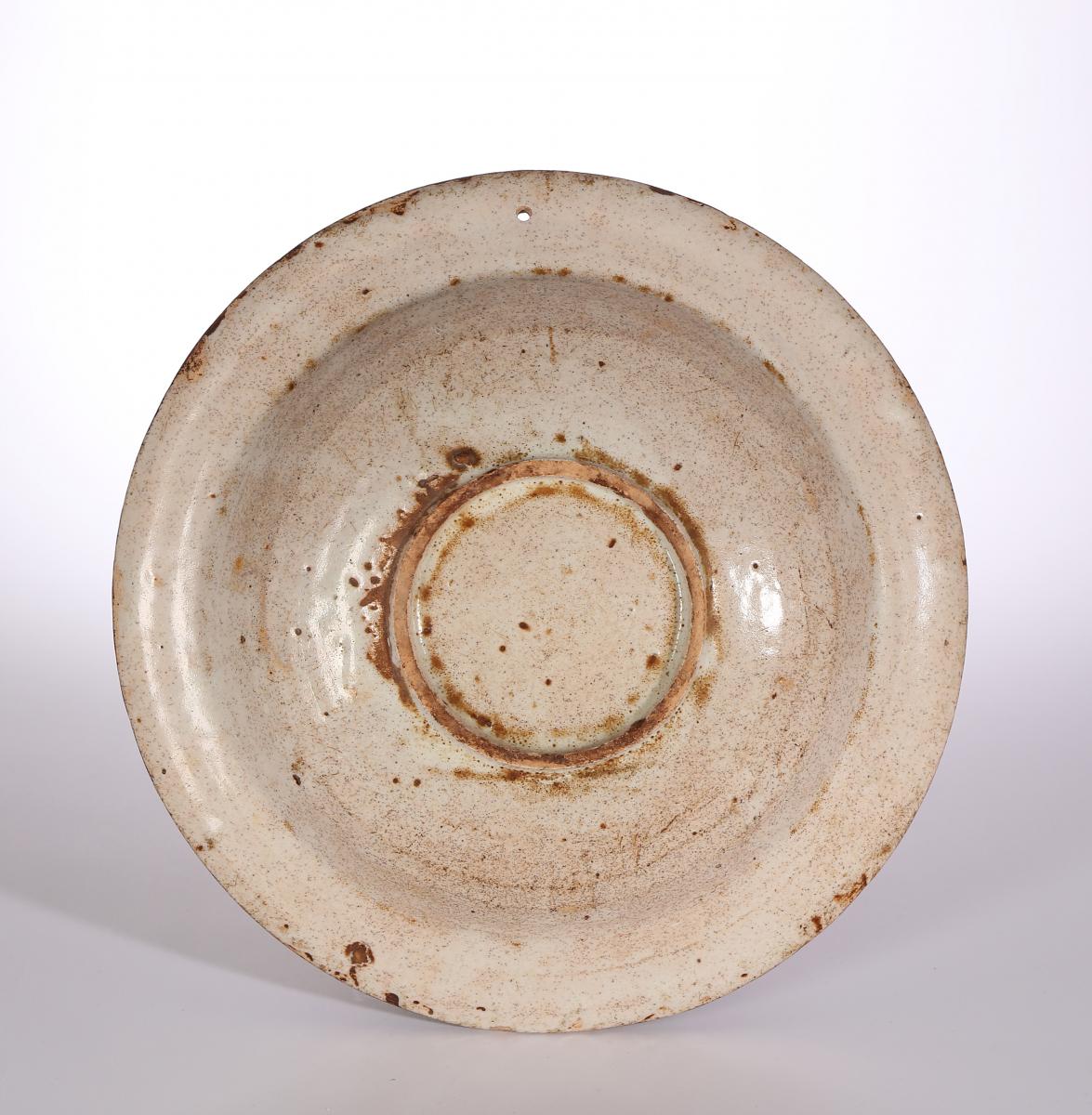
This object is eligible for a Certificate of BADA Provenance
The BADA Standard
- Since 1918, BADA has been the leading association for the antiques and fine art trade
- Members are elected for their knowledge, integrity and quality of stock
- Our clients are protected by BADA’s code of conduct
- Our dealers’ membership is reviewed and renewed annually
- Bada.org is a non-profit site: clients deal directly with members and they pay no hidden fees
Tin-glazed earthenware, Spain
1623 – 1650
Painted in blue, ochre and outlined in a dark manganese with a standing gentleman holding a staff, wearing a plumed hat (chambergo), jerkin and breeches tied at the knees with pompoms.
This series of dishes was made at both Talavera and in nearby Puente del Arzobispo from around 1580 to 1650, they are usually heavily potted which accounts for their survival. In some examples the figures wear a ruff or, as in this example, a gorget (golilla), the ruff was banned by Royal decree in 1623, Anthony Ray suggests that dishes like ours post-date that event.
The idea of decorating in a limited palette on a white tin glaze derives from the Faenza compendario style. The boldly drawn standing figure is reminiscent of the well-known series of dishes from Montelupo decorated with soldiers but the earliest Talavera examples perhaps predate them.
References:
Anthony Ray, Spanish Pottery 1248-1898, (V&A Publications, 2000), p. 175, no. 329, colour pl. 38
Dimensions
33.8 cm diam.Condition report
Chips to the rim, pierced for suspension. No restoration.The BADA Standard
- Since 1918, BADA has been the leading association for the antiques and fine art trade
- Members are elected for their knowledge, integrity and quality of stock
- Our clients are protected by BADA’s code of conduct
- Our dealers’ membership is reviewed and renewed annually
- Bada.org is a non-profit site: clients deal directly with members and they pay no hidden fees


